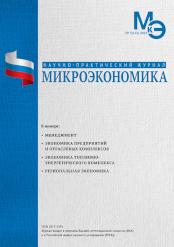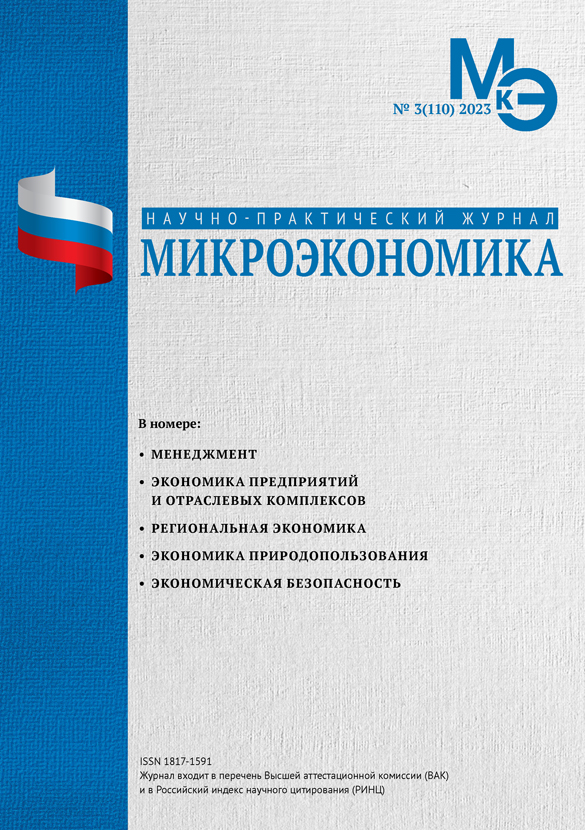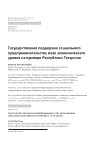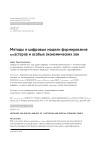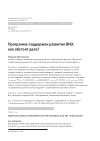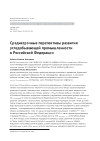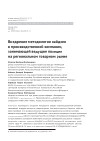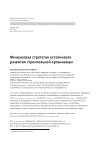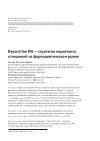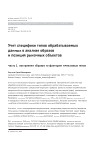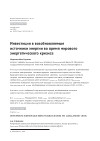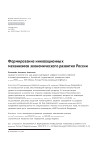DOI: 10.33917/mic-5.112.2023.57-71
The introduction of the kaizen methodology in a manufacturing company that occupies a leading position in the commodity market of the Moscow region. One of the most striking examples of the use of Japanese management principles in Russian conditions is the confectionery company Bolshevik JSC, where the development of the concept of the system of organization and rationalization of the workspace (5S) and universal equipment maintenance (TPM), which are the main elements of the concept of introducing employees to Kaizen thinking, allowed to increase the competitiveness of the company on the regional market, reduce costs associated with downtime and equipment shutdowns, improve the quality of labor resources, i.e. to grow competent equipment specialists, as well as to interest both operators and repairmen in the maintenance and improvement of technological equipment. Shows that the company «Bolshevik» has created such a type of equipment maintenance system, in which the main functions are transferred to the operators of technological equipment.
Describing the results of the implementation of the basic elements of the Kaizen concept, we can say that there were no serious difficulties in implementing the basic elements of the Kaizen concept in Bolshevik JSC, but at the initial stage there was a lack of interest on the part of employees. As soon as the first results appeared, production interest began to grow. The average order time for components has decreased by 30%, production discipline has improved (for example, since the introduction of the kaizen policy, no warehouse worker has been late), equipment downtime at the Bolshevik confectionery factory has decreased by 9% over the past year alone.
References:
1. Atamanyuk O.Ya., Matushevskaya E.A. Features of property and capital valuation on the example of a confectionery factory. In the collection: Economics and the banking system: theory and practice. Materials of the correspondence international scientific and practical conference. Dagestan State University; North Caucasus Federal University; Financial University under the Government of the Russian Federation. 2016. pp. 54-60.
2. Breshina A.V., Filatov V.V. Application of the kaizen system in the production management of the multinational corporation NESTLE. In the collection: Innovative development of machinery and technologies in industry (INTEX-2021). Collection of materials of the All-Russian Scientific Conference of young researchers with international participation. Moscow, 2021. pp. 26-30.
3. Grachev N.S., Logunova N.Yu. Process as one of the main values in the philosophy of Kaizen in the food industry. In the collection: Theory and practice of expertise, technical regulation and conformity assessment of products. Collection of scientific papers based on the materials of the Round Table with international participation. Moscow, 2021. pp. 47-50.
4. Grachev N.S., Lyubina O.N. Process as one of the main values in the philosophy of Kaizen. In the collection: Economy today: current state and prospects of development (Vector-2021). Collection of materials of the All-Russian Scientific Conference of young researchers with international participation. Moscow, 2021. pp. 117-120.
5. Zhukova A.A. Problems of practical application of the kaizen concept for business process reengineering. Student. 2020;21-3 (107):63-65. (In Russ.).
6. Imai Masaaki. Gemba kaizen. Guide to the book / Ser. Vol. 10 Library of the General Director: BGD. The series «School of Modern Business». Moscow, 2010.
7. Lukashevich A.I., Logunova N.Yu. Assessment of the degree of personnel involvement in the use of the Kaizen system at food industry enterprises. In the collection: Theory and practice of expertise, technical regulation and conformity assessment of products. Collection of scientific papers based on the materials of the Round Table with international participation. Moscow, 2021. pp. 67-73.
8. Lukashevich A.I., Minaichenkova E.I., Filatov V.V. Application of the Kaizen system in the implementation of the national project «Housing and urban environment». In the collection: Economy today: current state and prospects of development (Vector-2021). Collection of materials of the All-Russian Scientific Conference of young researchers with international participation. Moscow, 2021. pp. 34-38.
9. Mikoyan L.V. Development of a strategy for the development of a confectionery factory. In the book: Science Week 2020. Collection of abstracts in two parts. Rostov-on-Don, 2020. pp. 214-217.
10. Mikoyan L.V., Orlova V.G. Marketing analysis of confectionery factory products. In the collection: Technologies of marketing, brand management and advertising. Materials of the All-Russian Scientific and practical Conference. State University of Management. Moscow, 2019. pp. 55-57.
11. Mikoyan L.V., Orlova V.G. Strategic analysis of the activity of the confectionery factory. In the collection: Problems of automation. regional management. communication and automation (SAILS-2019). Proceedings of the VIII All-Russian Scientific Conference of Young Scientists, postgraduates and students. Proceedings of the VIII All-Russian Scientific Conference of Young Scientists, Postgraduates and students, In two volumes. 2019. pp. 85-92.
12. Naumova R.E. Features of cost optimization for the production of confectionery factory products. In the collection: Accounting, analysis and audit: current state and prospects of development. materials of the XII International Scientific and Practical Conference. Ural State University of Economics. Yekaterinburg, 2021. pp. 150-152.
13. Naumova R.E. Features of cost analysis at a confectionery factory. In the collection: Actual problems of accounting, analysis and audit. Materials of the XIII All-Russian Youth Scientific and Practical Conference with international participation. Kursk, 2021. pp. 315-319.
14. Nemtsov D.V. The subject stages of the introduction of the Kaizen concept. Management of economic systems. 2020;1 (29):17-20. (In Russ.).
15. Ouchi U.G. Methods of production organization: Japanese and American approaches. M.: Economics, 1993. p. 18.
16. Penkina Yu.I., Kalinin Yu.S. Development of a program plan for mandatory preliminary events at a confectionery factory. Research and development of young scientists. 2016;15:70-73. (In Russ.).
17. Perlov M.S. «Kaizen» – continuous improvement. Design bureau. 2020;1: 75-79. (In Russ.).
18. Porotnikova M.G. Ways to increase the profitability of a confectionery factory. In the collection: The best student article 2018. collection of articles of the XVIII International Research Competition. In 2 parts. Responsible editor G.Y. Gulyaev. 2018. pp. 61-63.
19. Sidorov P.A. Marketing activity as an important factor in the development of a confectionery factory in modern conditions. In the collection: Topical issues of interaction between education, science and business. Collection of articles of the International Scientific and Practical Conference. 2018. pp. 237-250.
20. Simonova V.A., Filatov V.V., Bezpalov V.V., Gorin D.S. Analysis of the economic efficiency of assets of industrial enterprises of the industrial complex of urban economy for the purposes of their owners. Municipal Academy. 2022;2:130-136. (In Russ.).
21. Slobodyanyuk A.A., Filatov V.V. Application of the kaizen system at tobacco manufacturing enterprises. In the collection: Theory and practice of expertise, technical regulation and conformity assessment of products. Collection of scientific papers based on the materials of the Round Table with international participation. Moscow, 2021. pp. 101-104.
22. Stukov S.P., Elagina V.B. The Kaizen system: fundamentals, advantages and possibilities of introduction in Russian companies. Bulletin of the Magistracy. 2018;1-3 (76):77-79. (in Russ.).
23. Tikhonov N.E., Andreasyan G.M. What is kaizen? The five rules of kaizen. Economics and society. 2021;11-2 (90):439-442. (In Russ.).
24. Management of a confectionery factory. Baking/ Confectionery sphere. 2015;3 (60):26-28. (In Russ.).
25. Filatov V.V., Politova R.V., Pershukova S.A., Sklyarenko R.P., Korabelnikova A.A. Modern approaches to change management in the state program of the city of Moscow «Development of the cultural and tourist environment and preservation of cultural heritage» based on Kaizen technology. Municipal Academy. 2021;3:23-30. (In Russ.).


